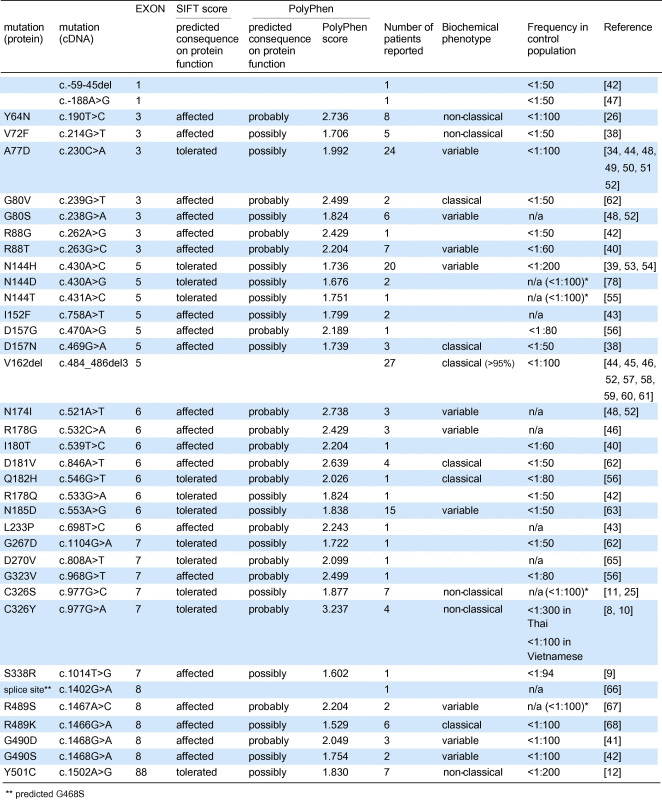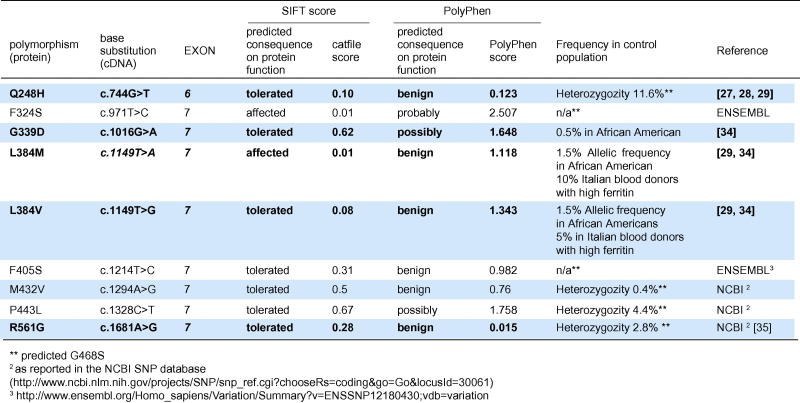In the above named article there were three errors:
-
1.
In the section on “How to differentiate between SLC40A1 mutations and polymorphisms”, a reference was left out of the following paragraph. The paragraph and reference are now listed below.
Ferroportin disease is genetically heterogeneous with 36 different SLC40A1 mutations reported [8–10,12,26–29,38–41,45–68,78] as summarized in Table 3. In addition, nine ferroportin gene polymorphisms were reported, three of which were associated with increased serum ferritin in various populations (Table 4) [29,34]. The allele frequencies of 29 disease-associated ferroportin mutations had been determined in matched populations and was found to be <1:100. It remains unclear whether L233V and D270P, each of which have been identified in single patients with iron overload, are disease-causing mutations or represent benign sequence variants [43,65].
[78] Wallace DF, Clark RM, Harley HA, Subramaniam VN. Autosomal dominant iron overload due to a novel mutation of ferroportin1 associated with parenchymal iron loading and cirrhosis. J Hepatol 2004;40:710–3.
-
2.
In Table 3, Table 4 there were some errors. The tables are now reproduced correctly on the following pages.
Table 3.
Molecular genetics of SLC40A1 mutations. The frequency of mutations highlighted with ∗ in the control population can be inferred from studies, in which control populations have been screened for the presence of another mutation, which affect the same residue.
 |
Table 4.
SLC40A1 non-synonymous single nucleotide polymorphisms. SNPs, which have been associated with high serum iron parameters, are highlighted in bold and italics.
 |
The authors apologise for these errors.


